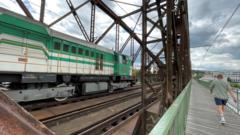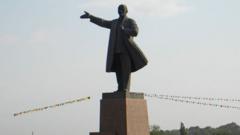The Vysehrad railway bridge, an iconic 123-year-old structure in Prague, is under threat of dismantling as part of a new railway project, sparking emotional responses from preservationists and city officials alike. Recognized for its contribution to Prague's unique skyline alongside the Vysehrad fortress, the bridge is a key element of the city’s architectural identity, attracting millions of tourists.
Architect and bridge engineer Petr Tej, a vocal opponent of the proposed demolition, emphasizes the bridge's cultural significance, comparing its value to that of Charles Bridge by the Prague Castle. "These panoramas are crucial to Prague," Tej asserts, highlighting his belief in restoring, rather than replacing the landmark.
The Vysehrad Bridge Foundation, a coalition of experts advocating for restoration, argues against the Railway Authority's plans, claiming the bridge's state has been overestimated. Their assessment suggests that much less of the bridge's steel needs replacement than previously reported. Supported by a petition of over 25,000 residents and a favorable review from UNESCO, they call for a solution that retains the bridge as a vital transport route while preserving its historical integrity.
However, Pavel Paidar from the Railway Authority maintains that the bridge is unable to withstand increasing rail traffic demands. Paidar points out that while the bridge currently carries a significant portion of Prague's railway traffic, its corroded state limits its capacity, presenting a structural challenge that cannot be overlooked.
Plans for a new bridge promise enhancements, including an additional track and landscape revitalization. Nevertheless, critics argue that the proposed relocation of the old bridge to Modrany may disrupt local aesthetics and fail to harmonize with the surrounding environment.
As Prague grapples with the clash between modern transport needs and the preservation of its historical character, the decision surrounding the Vysehrad bridge has sparked a broader conversation on cultural heritage against the backdrop of urban development. The outcome will ultimately reflect not only the city's architectural values but also its identity in an increasingly modern world.





















